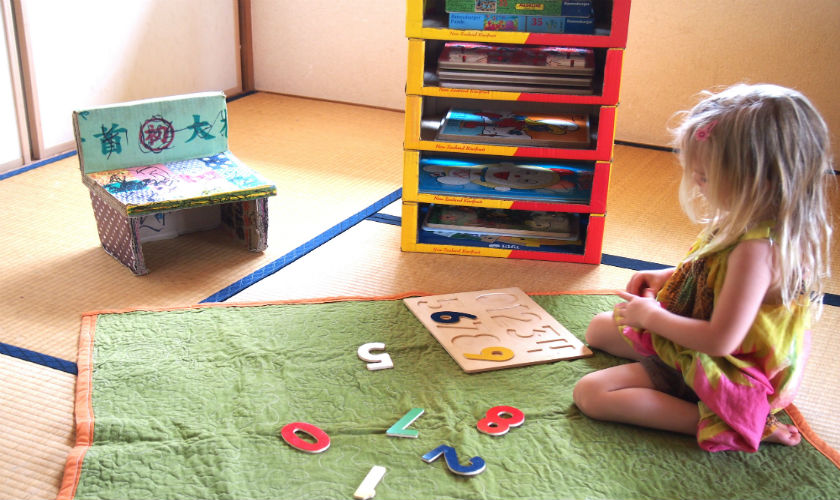Priorities, we can say the following about the features of the Montessori method.
It helps the child gain independence.
It encourages the child to study by himself.
Gets help from educational materials that reduce teacher intervention.
It allows the child to do all his daily activities with as little help as possible.
In this sense, Montessori approach child;
Creativity,
problem solving skills,
Helps develop reasoning and time management skills.
How is Montessori Practiced at Home?
So, for this method, how can you make arrangements at home and how can you organize your relationship with your child at home? Here are the Montessori application methods at home!
Shelves in the nursery should be low. If the shelves are not low, the child’s belongings should be placed on the lowest possible shelves. If this is not possible, a stool with a solid contact with the floor should be placed so that the child can reach the upper shelves.
The number of toys / materials / objects placed on the shelves should be limited.
Toys should not be put in the box / basket as it is important for the child to be able to see the toys.
There should be several books large enough for the child to carry.
Objects hung on the walls should be at eye level of the child.
The child’s room/space should be as tidy and plain as possible.
The number of clothes in the child’s closet should be limited. So the child can choose what to wear.
Clothes that the child will not be allowed to wear should not be put in the wardrobe.
Necessary arrangements should be made so that the toddler can reach the light switches and open the doors.
Additional measures should be taken to ensure that the sink, fountain and toilet are accessible for the child who starts to move independently. If it is not possible to reach the sink even with a stool, he should be provided with a basin and water to clean himself in another area.
The child’s exploration of real objects should not be hindered by toys. For example, he does not need to use toys instead of a real plate, cup, spoon.
The diaper of the child should be changed in the same place all the time.
The child’s bed should be one in which he can move independently without parental assistance when he wakes up.
Spaces should be created for the child to work at the table or on the floor. Working mats/rugs can be used to gain the habit of working in a limited area.
Until the age of 6, the place of the objects around the child should be kept as stable as possible. In this period when the child explores his environment, the constant changing of the location of the objects will complicate the discovery process.
Plastic toys should be avoided, wooden toys that appeal to the senses should be preferred.
The language that the child is expected to acquire should be used with a correct grammatical structure when speaking to him.
The child should attend meal times with the family. The food should be served to the child with the same care as to the adult.
Plates, spoons, etc. that the child and friends can use in a cupboard within the reach of the small child. must exist.
If the amount of food to be given to the child is limited, containers sized to hold that amount should be used.
Children should not be forced to eat and toilet times.
At home and outside the home, the child should act in accordance with the pace. For this reason, it is recommended to use vehicles such as prams as little as possible for children with mobility independence.
For children without independence of movement, it is important to allow them to perceive their surroundings while lying in a pram or on their lap. This can be achieved by allowing the pram to see the surroundings by not pushing the stroller too fast. It can be done in the baby’s lap by adjusting the tilt and position of the baby’s lap, allowing it to explore its surroundings.
Objects that are thought to harm the child at home should be removed or rearranged in a way that will not harm the child.
If possible, the animals that the child takes care of should be found. However, when choosing these creatures, it should be taken into account that their freedom is as important as the freedom of humans and we have no right to hinder the freedom of any living thing.
Learn about Montessori and other education systems.
Get detailed information about human development period features. This will give you clues about your child’s age-related needs and pleasure-curiosities.
Observe your child without disturbing him. Try to get to know him.
Make sure your child sleeps well.
Avoid punishment.
Create a library for your child.
Get to school on time and pick up your child from school on time.
Make sure your child meets their self-care needs as age permits.
If possible, raise a plant and/or animal with your child.
As much as possible, have restrictions on the use of TV and technological products. However, do not forget to create fun alternatives for the hours when they are deprived of these products.
May your bedtime ritual be full of love.
Read books, only then can you encourage your child to read
